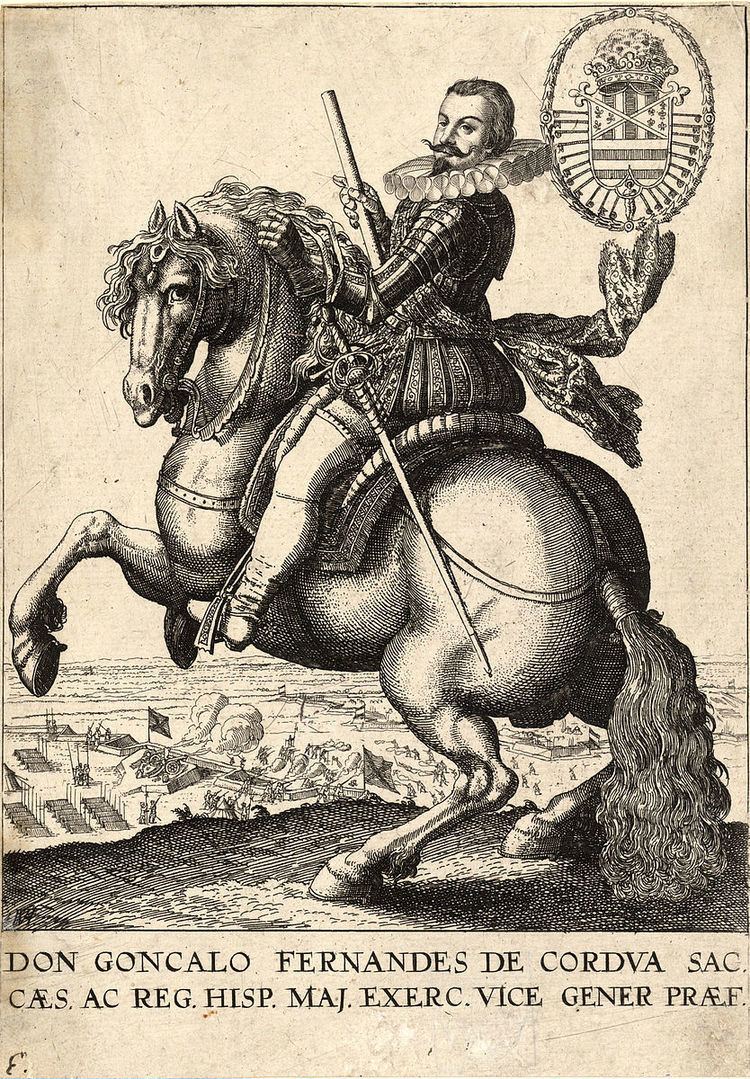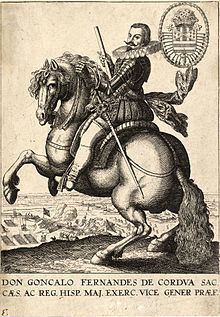Monarch Philip IV of Spain Allegiance Spain Role 1585–1645 | Religion Roman Catholic Name Gonzalo de | |
 | ||
Preceded by Gomez Suarez de Figueroa Battles/wars Eighty Years\' War
Capture of Maastricht
Thirty Years\' War
Battle of Fleurus
Palatinate campaign
Capture of Bacharach
Battle of Wimpfen
Battle of Hochst
Siege of Heidelberg
Capture of Mannheim
War of the Mantuan Succession Died February 16, 1645, Montalban, Spain Succeeded by Ambrogio Spinola, 1st Marquis of the Balbases Similar People Ernst von Mansfeld, Christian the Younger, Johann Tserclaes - Count of, Ambrogio Spinola - 1st Marqu, Gottfried Heinrich Graf zu P | ||
Gonzalo Andrés Domingo Fernández de Córdoba (31 December 1585 – 16 February 1645) was a Spanish military leader during the Eighty Years' War, Thirty Years' War and the War of the Mantuan Succession.
Contents
Biography

He was born at Cabra, in what is now the Province of Córdoba and was the third son of Antonio Fernández de Córdoba Cardona y Requesens, the Duke of Soma and was great-great-great grandchild of his namesake Gonzalo Fernández de Córdoba, the Great Capitan. In 1624 was awarded the title of the first Prince of Maratea.
He participated in the battles of Wimpfen and Fleurus, as well as in Höchst whereby Ernst von Mansfeld and Christian of Brunswick were defeated. From 1621 to 1623, commanded the Spanish troops in the Palatinate, and Flanders, and defeated the Anglo-German Protestant troops in the sieges of Bacharach and Heidelberg.
From 1625 to 1629 he was Governor of the Duchy of Milan. In 1628 he took part in the War of the Mantuan Succession.
When he failed to take Casale and stop the French invasion in 1629, he was called back to Madrid and court-martialed.
He was reinstated a few years later and sent to the Netherlands in 1632. Here he conducted operations on the lower Rhine in the rear of the victorious army of Gustavus Adolphus, but he was unable to prevent the Capture of Maastricht by Frederick Henry, Prince of Orange. He was recalled to Spain in 1633 and died at Montalbán in 1645, without having been married, and with no issue.
Trivia
He is also a character in the novel The Betrothed, where Alessandro Manzoni describes the anger of the Milanese populace towards him, when he leaves Milan in 1629.
